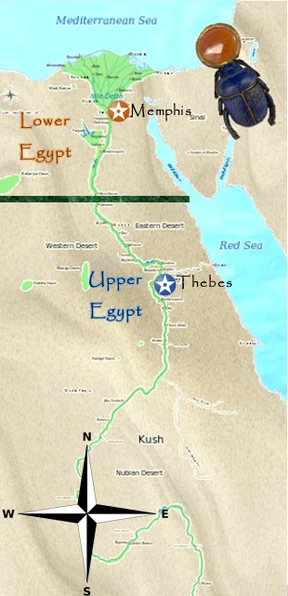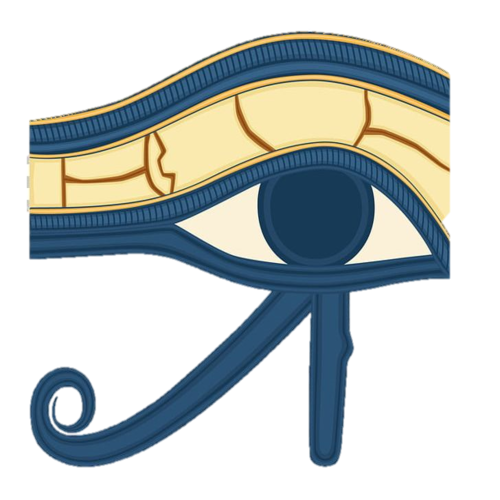
Edgycational- How Egyptian Mummies were Made! Halloween Special

Map of Upper and Lower Egypt
Ancient Egypt was divided into two kingdoms, known as Upper and Lower Egypt. The pharaohs were known as rulers of the Two Kingdoms, viz. upper and lower Egypt. While the labeling of "upper" and "lower" might seem counter-intuitive, with Upper Egypt in the south and Lower Egypt in the north, the terminology derives from the flow of the Nile from the highlands of East Africa (upstream) to the Mediterranean Sea (downstream).
Lower Egypt is to the north and is that part where the Nile Delta drains into the Mediterranean Sea. Upper Egypt is to the south from the Libyan desert down to just past Abu Simbel (Nubia). The Nile controlled everything for the Egyptians, so this effected it.
Lower Egypt[]
Lower Egypt was known to the Pharaohs as Ta-Mehu ("Land of the North"). This part of the country was also divided into nomes, or provinces. However, most of this land undeveloped scrubland, the organization of the nomes underwent several changes. Ultimately there were twenty nomes and the first of these was Memphis.
Egyptian history is divided into periods that reflect the unification of Upper and Lower Egypt under one king. Intermediate periods of Egyptian history were times when Upper and Lower Egypt were not unified under one king.
Landscape[]
Egypt's landscape is dominated by the Nile delta at Alexandria. Weather can be extreme and there is more rainfall in this area. The Lower Egyptians customs and history are different from those from the Upper Egyptians. Even today, Lower Egypt is much more industrialized, and influenced by trade and commerce with the rest of the world.
The patron goddess of the Ancient Lower Egypt is Wadjet.
Upper Egypt[]
Upper Egypt was known to the Pharaohs as Ta-Shemau ("Land of Reeds" or "Sedgeland"). This part of the country is a narrow strip of land that extends from the cataract boundaries of modern-day Aswan to the area south of modern-day Cairo. Historically, Upper Egypt's land was more isolated from activities to the north. From around 800 BC to 525 BC, this area was ruled by the High Priestess of Amun (often, this position were held by the same woman).
There were a number of differences between Upper and Lower Egyptians in the ancient world. They spoke different dialects, and had different customs, needs and interests. Many differences and the tensions they create still exist in modern times.
The patron goddess of the Ancient Upper Egypt is Nekhbet.
